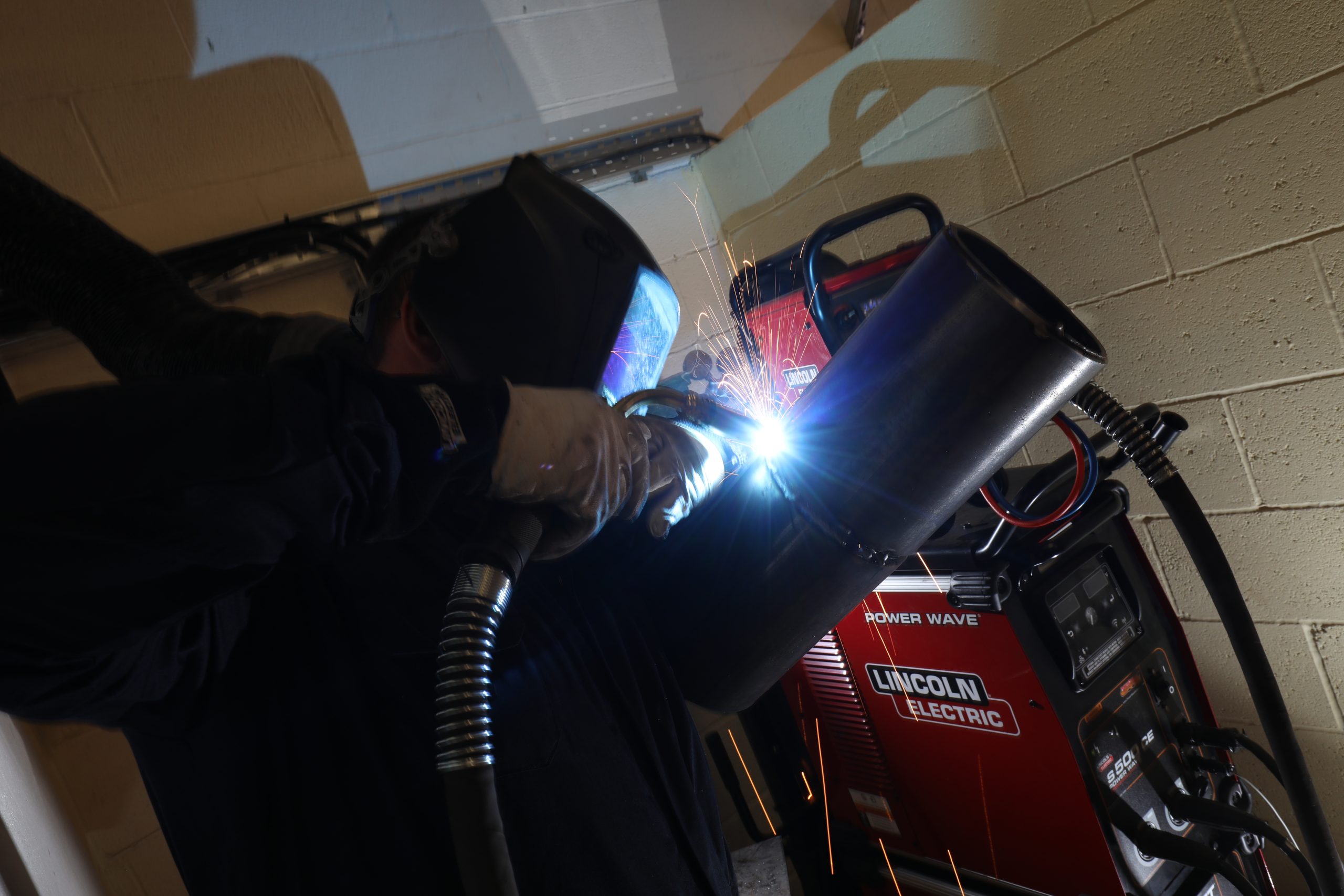Welding Aluminum: MIG welding options

Aluminum material has very specific properties which need to be considered during welding to prevent excessive distortion and grain growth. They are:
- High coefficient of thermal expansion (approx. twice that of steel) and,
- High Thermal conductivity.
It must therefore seem logical for any fabricator of aluminum to select a low heat input process, and for MIG welding this is often short circuiting and pulse transfer.
Short circuiting MIG welding is a process related to low voltages and amperage in comparison to other transfer modes (Spray). The wire feed rate just exceeds the burn off rate and a short circuiting of the wire on to the parent material is witnessed.
Pulse MIG welding is a transfer mode which can operate at a moderately low amperage. The droplets created tend to be smaller than the diameter of the electrode and no contact is required, "free flight". A background and peak current are applied at a controllable frequency. During times for peak current the weld pool penetrates the material creating conditions for good fusion.
Short circuiting pros and cons.
- Pros:
- Low heat input relative to spray
- Great for positional welding
- Good on thin materials
- Low distortion
- DCEP has good oxide cleaning effect
- Cons:
- Low heat input can lead to lack of fusion defects
- Low heat input and rapid cooling can create conditions for porosity (wormhole and cluster)
- Stop start defects are common
Pulse welding pros and cons.
- Pros:
- Lower average heat input
- Good for positional welding
- Good on thick and thin materials
- Low distortion index
- DCEP has good oxide cleaning properties
- Helps to lower porosity
- Creates good penetration
- Wider operating window
- Cons:
- Increased capital investment
- Marginally more difficult to set-up
It should be noted that most welding equipment like Lincoln electric power MIG 360MP have a start and crater function. These controls help to provide amperage control at the start and finish of a weld run. This will help to prevent stop start defects.